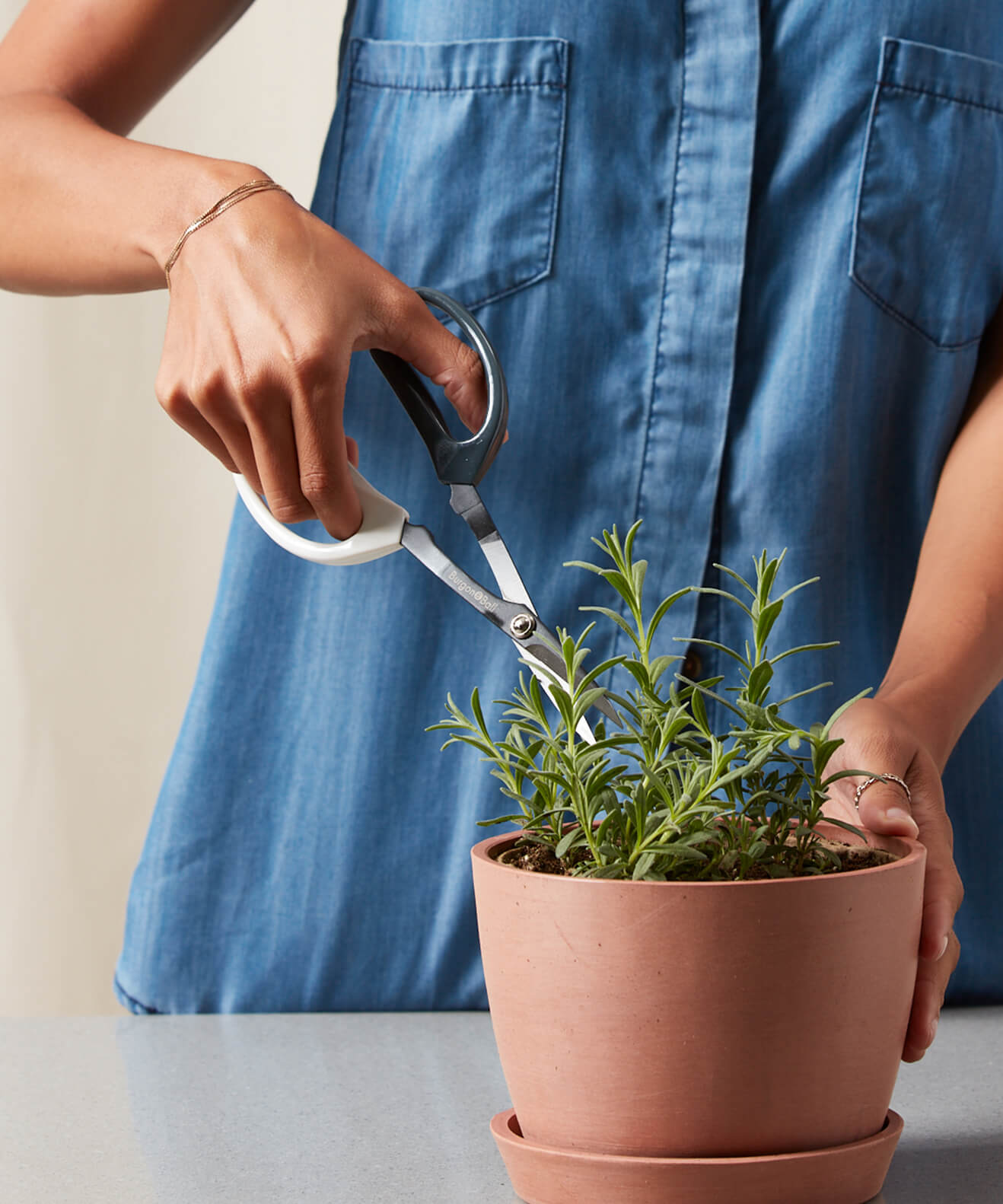For comprehensive care tips, we recommend that you read our herb care guide.
When you’re looking forward to eating the herb plants you’ve been tending so lovingly, it can be disheartening when they start fading or turning yellow. Don’t be discouraged – herbs are able to thrive indoors and your herb garden can rebound if you’re able to identify the cause. Temperature, light conditions, watering issues and a lack of fertilization can all cause yellowing leaves.
If yellowing leaves are only at the bottom of your plant, it’s likely looking to shed those leaves naturally to conserve energy. You can strategically trim off these leaves to help the rest of our plant thrive. When you’re trimming the herb to eat, try strategically remove the higher leaves to ensure the lower leaves get enough light.
Try Fertilizer
Your indoor herbs need a nutrient boost to thrive, so if you haven’t been applying any fertilizer, this could very well be why your fresh herbs are looking a bit peaky. All you need is a balanced liquid plant food from any garden center, diluted to half strength, and added once a week during your watering. Make sure you do dilute it, as full strength can be harsh on your herbs and cause further damage.
Troubleshoot Watering Issues
Yellowing leaves can be a sign of both underwatering and overwatering. Most indoor herbs only require watering once a week, with the roots staying moist but not soggy. To test how your soil is retaining water, wait a few days after watering and press your finger an inch below the surface of the soil. It should be moist, but if it’s still soggy, use less water next time, or wait longer between watering. If it’s dry when testing, do the opposite – more water, slightly more often.
Check the Temperature
Most herbs require an indoor temperature of about 70 degrees F, with only minor fluctuations. When temperatures are too high, move your plants into areas of the home with slightly more shade. Ensure you keep them away from air conditioning vents or fans as well.
Ensure the Lighting is Right
The lighting needs for individual herbs vary, but on average herbs prefer five hours of sun a day. You should place your herbs so they receive direct, natural light. A south facing window with bright light works well for this purpose. If there are no sunny windows in your home or apartment that can provide your herbs with ideal natural sunlight, consider installing a full spectrum grow light above your herbs.
You Might Need to Repot
If you’ve had your herb for a long time and it’s only just starting to yellow, it could be rootbound in its pot. Look for a clay pot with drainage holes that is 2 inches wider in diameter than its previous pot. You’ll also want to ensure you use a potting soil that is ideal for herbs to grow indoors – look for soil with a pH between 5.5 and 6.5.










